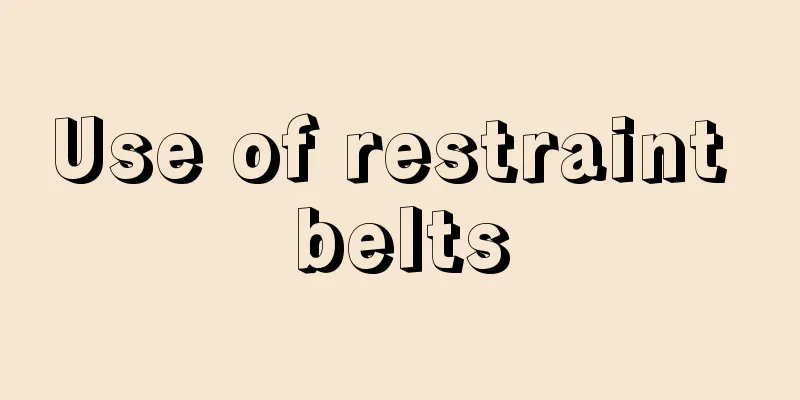Use of restraint belts

|
Restraint belts are used relatively frequently in medicine. Restraint belts are mainly used to ensure the safety and comfort of patients. Before using restraint belts on patients, the patient's family members should be consulted. When using restraint belts on patients, padding should be placed under the restraint belts. The tightness should be appropriate when fixing them. At certain intervals, the condition of the restrained part of the patient should be observed to see if the patient has any abnormalities. How to use the restraint belt 1. First, assess the patient's condition, age, state of consciousness, vital signs, and limb mobility, as well as any skin friction damage and blood circulation disorders. 2. Explain to the patient or family members the purpose, time of use, method and precautions of using the restraint belt, and try to obtain the cooperation of the patient or family members. 3. Select the restraint site according to the patient's condition. Commonly used restraint sites are wrists and ankle joints. 4. Use the prepared restraint belt to go around the middle and fold it in half to form a double knot. If necessary, the knot can be wrapped with the patient's sleeve or cotton pad. Slightly tighten the knot at the restraint part with appropriate tightness, so that 1-2 fingers can be inserted to avoid affecting blood circulation. Tie a knot to prevent the hands and feet from falling out easily, and fix the restraint belt to the bed. 5. The restraint part is at the shoulder: it mainly restricts the patient from sitting up. At the knee: restrict the patient's lower extremity movement. About restraint belts Restraint belts can control the occurrence of dangerous behaviors of patients (such as suicide, self-harm, extreme excitement and impulse, and obvious aggressive behavior) and prevent patients from harming others or themselves. Prevent children, patients with high fever, delirium, coma, agitation and critically ill patients from falling out of bed, being hit, scratched, etc. due to weakness, unconsciousness or other reasons, ensure the safety of patients, and ensure the smooth progress of treatment and care. Notes on using restraint belts: (1) Sign the informed consent form. (2) Strictly follow the indications for use and avoid using it as much as possible. (3) Loosen the restraints regularly and pay attention to the skin condition at the restraint site. (4) Record the time of restraint and the time of release and the corresponding measures. (5) Assess the patient's limb strength at all times and avoid unnecessary restraint. Generally, restraint can be released if the strength is below level 3. |
>>: Precautions for using restraint belts
Recommend
How long after a meal can I drink yogurt
Yogurt has a good taste and high nutritional valu...
Self-treatment tips for rhinitis
With the rapid development of the economy, people...
What to do if a patient with endometrial cancer becomes pregnant
Pregnancy and childbirth are sacred and great thi...
How to quickly remove the diesel smell
People use cars as a means of transportation in t...
Take a break after working out for a few days
In order to achieve the goal of keeping fit and s...
What is a healthy diet for nasopharyngeal cancer during radiotherapy
In recent years, nasopharyngeal carcinoma has bec...
The disadvantages of sleeping late
For the sake of physical health, we must develop ...
What are the early symptoms of bladder cancer
Bladder cancer, what a familiar name, many people...
How is ear lymphoma caused
How is ear lymphoma caused? When lymph flows thro...
What are the methods to remove peach hairs
Peach is a common fruit in our lives. It tastes s...
Pain when pressing on the left side of your Adam's apple?
If you feel pain when pressing the left side of y...
Doctor, can I eat leeks after gastric cancer surgery?
You cannot eat leeks after gastric cancer surgery...
When is the best time to eat dried fruits
In addition to the nuts that we often eat in dail...
How to avoid scars on wounds
In life, there are often some accidental injuries...
How to improve self-control
Self-control, or self-control, is a relatively im...









